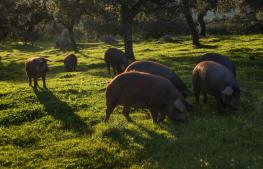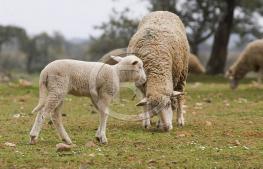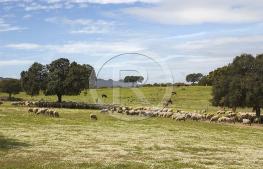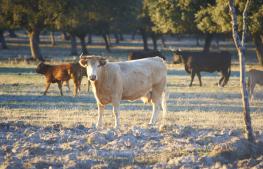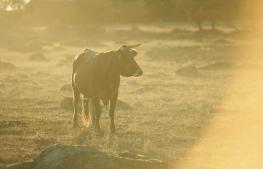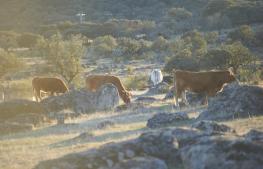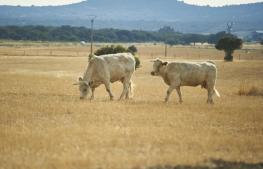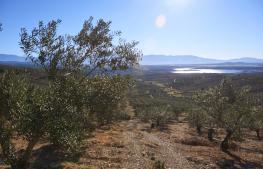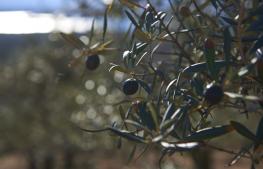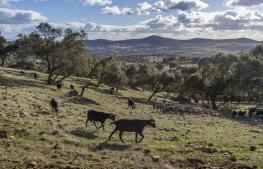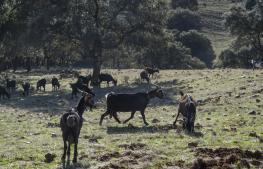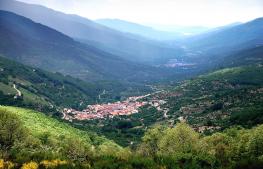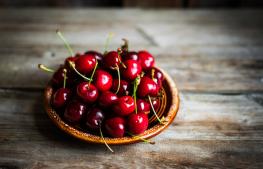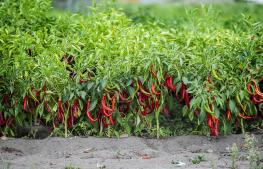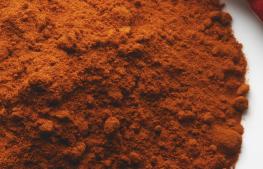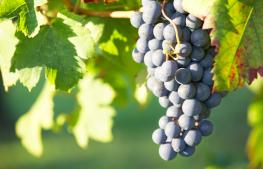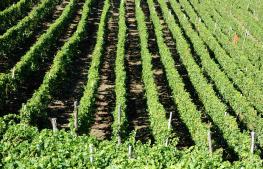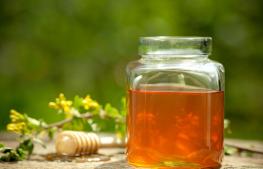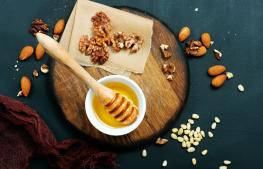Dehesa de Extremadura
"The best ham in the world"
Dehesa de Extremadura
The best ham in the world
Extremaduran ham is the best Iberian ham in the world. This is not something that happens by chance.
For a ham to become a delicacy and be covered by the Dehesa de Extremadura Protected Designation of Origin, it is necessary to follow some strictly established steps:
Extremaduran lamb
"Stockbreeding passion"
Extremaduran lamb
Stockbreeding passion
The Protected Geographical Indication covers lambs that graze in the dehesa grasslands of Cáceres and Badajoz and that are reared on mother’s milk for the first 45 days of their lives. Their mothers are Merino breed sheep or crosses with rams from the breeds Merino Precoz, Ile de France and Merinofleischschaf, with 50% of their genotypes having to be Merino. The fathers come from pure or simple hybrids of Merino, Merino Precoz, Ile de France and Merinofleischschaf stock.
Extremaduran Veal
"Extremaduran breeds"
Extremaduran Veal
Extremaduran breeds
The cattle that produce PGI Extremaduran Veal are reared on the Extremaduran dehesa grasslands in all the counties within the region.
The local breeds that graze on the dehesas and that are covered by the PGI are Retinta, Avileña-Negra Ibérica, Morucha, Blanca Cacereña, Berrenda en Negro and Berrenda en Colorado and the crosses between them.
The Blanca Cacereña breed was on the brink of disappearing in the mid-1970s. This breed and its crosses with black stock resulted in the Barroso Extremeño variant.
Gata-Hurdes Oil
"Manzanilla olive oil from Cáceres"
Gata-Hurdes Oil
Manzanilla olive oil from Cáceres
The Gata-Hurdes Protected Designation of Origin includes the counties of Fata, Hurdes, Trasierra, Tierras de Granadilla, part of Alagón, Ambroz, Jerte and La Vera, covering 84 municipalities in the north of the province of Cáceres.
Ibores Cheese
"Extremaduran goat’s cheese"
Ibores Cheese
Extremaduran goat’s cheese
Extremaduran goat’s cheese has its own name: Ibores Cheese. This is a full-fat cheese with a semi-hard rind, ivory in colour, rubbed with paprika or in oil. Its name comes from the county where the largest concentrations of goats are reared in the province of Cáceres, and also where it is made: Ibores, Villuercas, La Jara and Trujillo, and the area around the Villuercas Ibores Jara UNESCO Global Geopark, recognised by UNESCO for its geological value.
Jerte Cherries
"A landscape with a Picota flavour"
Jerte Cherries
A landscape with a Picota flavour
Cherries came to the Jerte Valley with the Moors, although they had already been being grown in Spain since Roman times. Today, the Jerte Cherry, which benefits from Protected Designation of Origin, has become the economic driver for the three valleys in the north of Cáceres: Jerte, La Vera and Ambroz.
The economy and culture revolve around this prized produce, from when it blossoms to when it is harvested and distributed.
La Vera paprika
"Tradition and product"
La Vera paprika
Tradition and product
La Vera paprika has its history in the province of Cáceres thanks to Holy Roman Emperor Charles V. The famed paprika, which currently has its own Protected Designation of Origin, was introduced in Spain after the conquest of the Americas, in the Royal Monastery of Guadalupe.
The monks there were pioneers in using it in the country and, a short time later, it was introduced in the Monastery of Yuste, where the monks grew the peppers and initially used the paprika to preserve sausages and then to season stews.
Ribera del Guadiana
"Wines from the land"
Ribera del Guadiana
Wines from the land
The PDO Ribera del Guadiana is present in two provinces of Extremadura; in the province of Cáceres, it includes the areas of Montánchez, Trujillo and Cañamero.
There are 30 different grape varieties in the PDO. The most important and well known are the Spanish varieties Tempranillo and Macabeo, as well as the local varieties Pardina and Cayetana. The red varieties play a fundamental role in the production of high-quality wines.
In the province of Cáceres, the vines are grown on terraces and are not very widespread, except in some areas of Montánchez.
Torta del Casar
"The pleasure of creamy cheese"
Torta del Casar
The pleasure of creamy cheese
Torta del Casar is a natural cheese made from Merino Entrefino sheep’s milk from flocks in the geographical area of Llanos de Cáceres, Sierra de Fuentes and Montánchez. This livestock area covers around 400,000 hectares and includes 36 municipalities, and the cheese is then produced in the town of Casar de Cáceres.
Torta del Casar is characterised by its semi-hard yellow rind, which encloses a pearly white cheese with an intense aroma and flavour. Its interior is so creamy that you can sometimes see it oozing out of cracks in the rind, something that makes it so appealing.
Villuercas-Ibores Honey
"Natural foodstuff"
Villuercas-Ibores Honey
Natural foodstuff
The honey with Protected Designation of Origin Villuercas-Ibores Honey is the natural product produced by European honey bees. The traditional production area for Villuercas-Ibores Honey is located in the south-east of the province of Cáceres, occupying the counties of Las Villuercas and Los Ibores, in the area of the Villuercas Ibores Jara UNESCO Global Geopark, recognised by UNESCO for its geological value.
DOP Villuercas-Ibores Honey includes four types of honey based on their flower composition:

